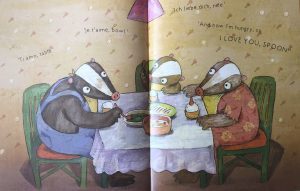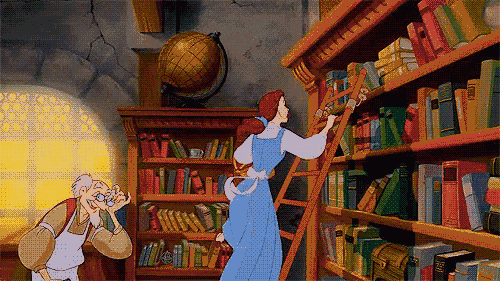
I love a bargain, and am also a great fan of recycling so I am particularly pleased with a new pile of German children’s books!
Some were purchased via LiPS, one was found in an Oxfam shop in Bath, and the other three were a Christmas gift from my son who is currently studying in Germany and found them in an Oxfam shop there.
So here they are!
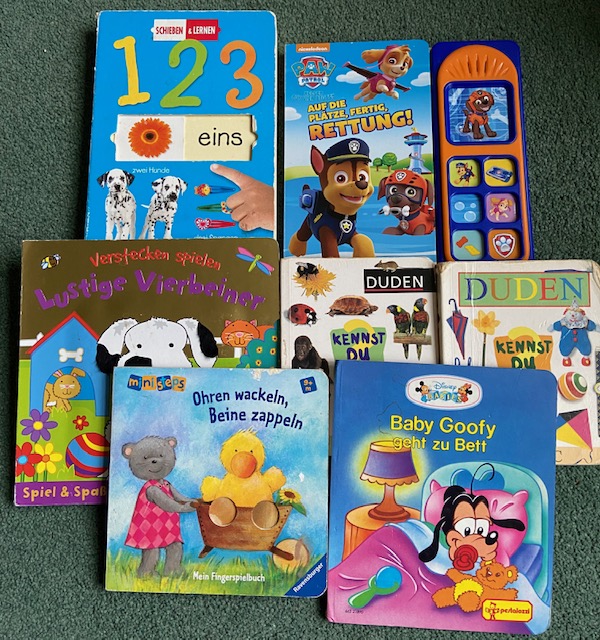

Lustige Vierbeiner
ISBN 978-1-78557-464-1

This lovely book is all about four legged friends playing Hide and Seek (Verstecken spielen) It has a touchy feely cover and features cute dogs a cat and a rabbit. I like the simplicity and repetition of the text as well as the animal noises. A fun book that would be great to read to FKS/KS1.

Beine zappeln
ISBN 978-3-473-31566-6
Ohren wackeln, Beine zappeln is another cute board book featuring animals. This time it has holes in each page in which you insert your fingers to make the ears (Ohren) or legs (Beine) of the animals. Each page has two lines of text and is written in rhyme – great to read aloud and practice your pronunciation as well as spotting the verbs. And of course, good for finger wiggling!
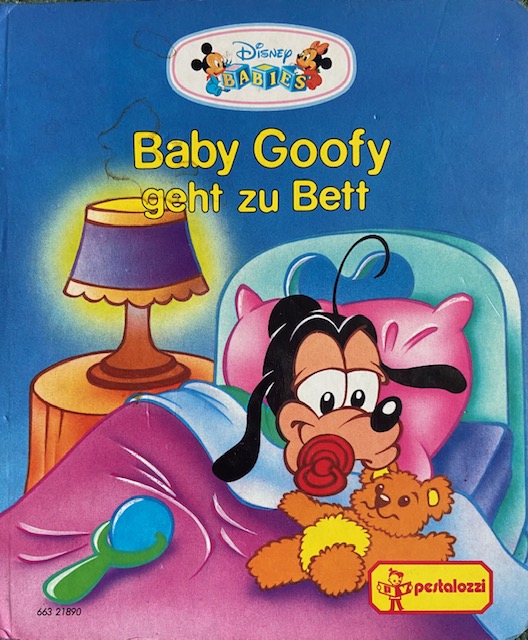
ISBN 3-614-21890-2

This a short board book is from the Disney Babies series and is all about baby Goofy going to bed. It’s written in prose and features Pluto as well as Goofy. Very cute!
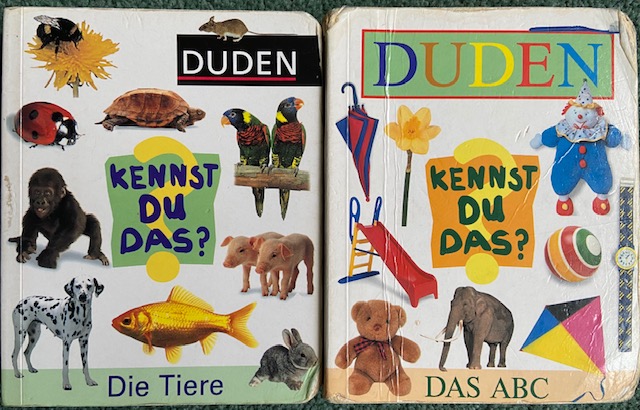
Die Tiere ISBN 3-411-70441-1
Das ABC ISBN 3-411-70631-7
Two books from the same series here! Kennst du das? – Do you know that?
Each is a word book with bright photographs to illustrate the meanings. They include ‘usual’ words such as Pferd, Hase, Katze, Tiger and Elephant, but also more unusual animals – Streifenhörnchen, Rotfeuerfisch and Wandelnde Blätter and vocabulary – Zange (pliers) Reißverschluss (zip) and Qualle (jellyfish) It also indulges my love of looking at German words, ‘literally translating’ and seeing language links:
Dreirad = three wheels = tricycle
Nacktschnecke = naked snail = slug
Stinktier = smelly animal = skunk
Fledermaus = flying mouse = bat
Nashorn = nose horn = rhino
Flusspferd = river horse = hippo
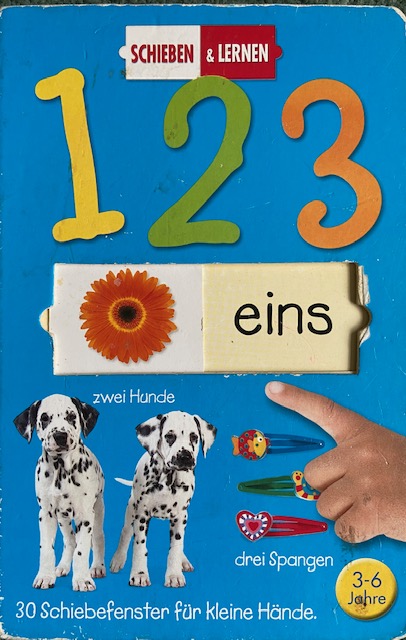
ISBN 978-3-940984-01-2
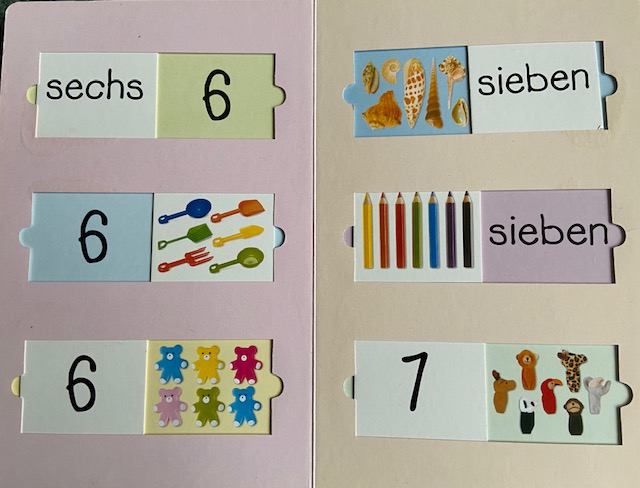
Finally a board book with sliding windows (Schiebefenster) to learn numbers 1-10. The windows slide to show either the numeral or a number of objects so could be used for numbers and then extended to use the vocabulary pictured, in singular and plural forms. Perhaps older learners could have a look in a dictionary for the words whilst others will begin to recognise the correct item from three after several readings.
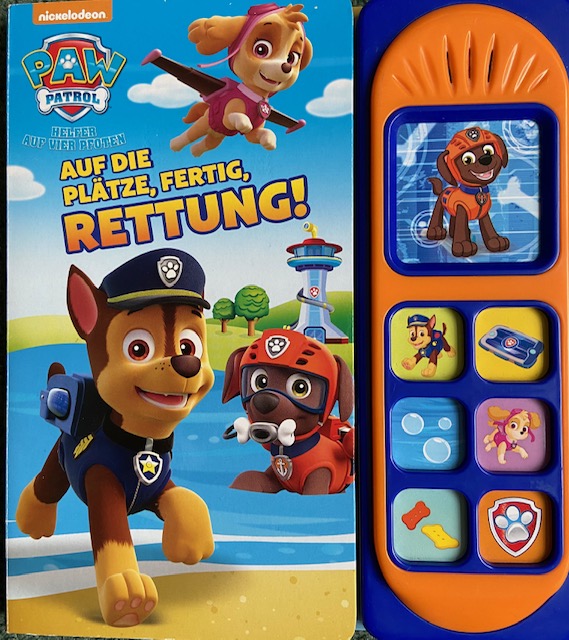
Auf die Plätze, Fertig, Rettung!
ISBN 978-1-5037-3215-5
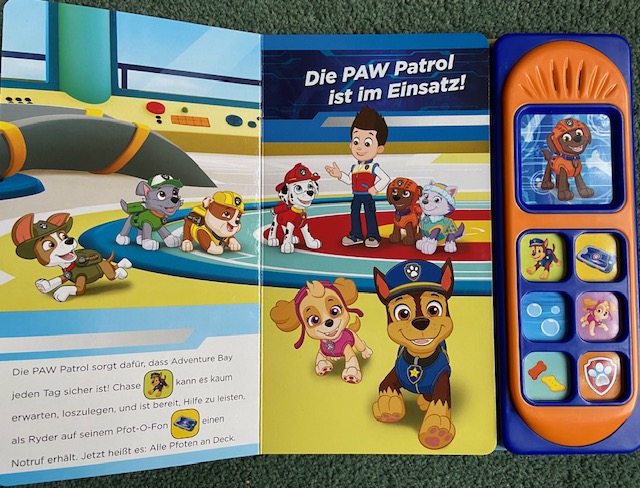
I was really surprised to find this book in an Oxfam shop in Bath, and even more surprised when I realised that the buttons still worked! I like reading books based on series that we watch in English as it’s possible to compare names and ket features in the other language. For example, Ryder and Chase have the same names in both languages and the PupPad in German is called the Pfot-o-fon (Paws ‘phone) I’m looking forward to sharing this book with the little ones at school. And I don’t think the enchantment of this book is limited to little ones..

So these are my new German books. What do you think? It’s a bit of a shame that I don’t teach German on a day to day basis but reading them aloud is great fun!
A reminder that there is a catalogue of my (ever growing!) collection of German children’s books here, and there is also a French list and several for Spanish – fiction, nonfiction, rhymes poems and songs, plus an ‘other languages‘ list too!

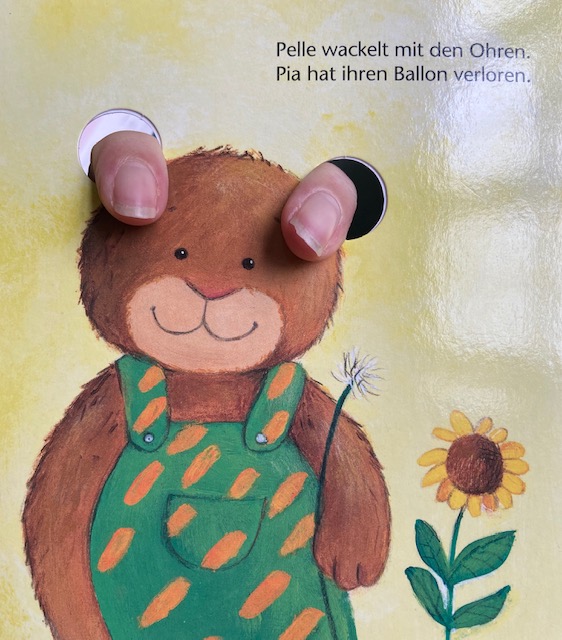


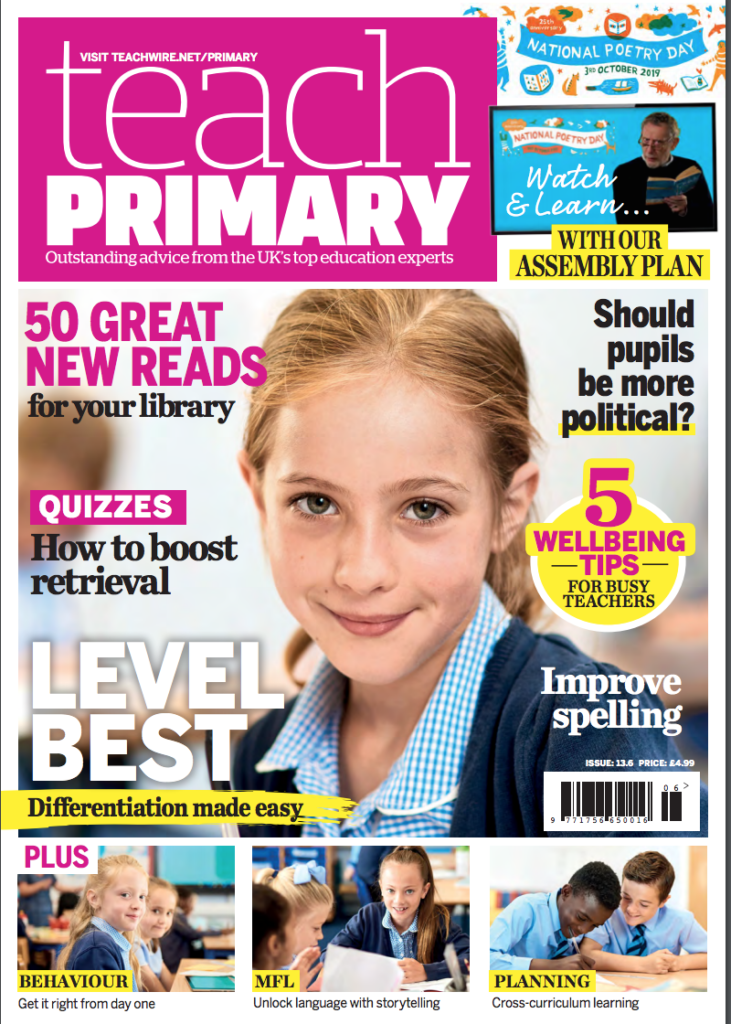
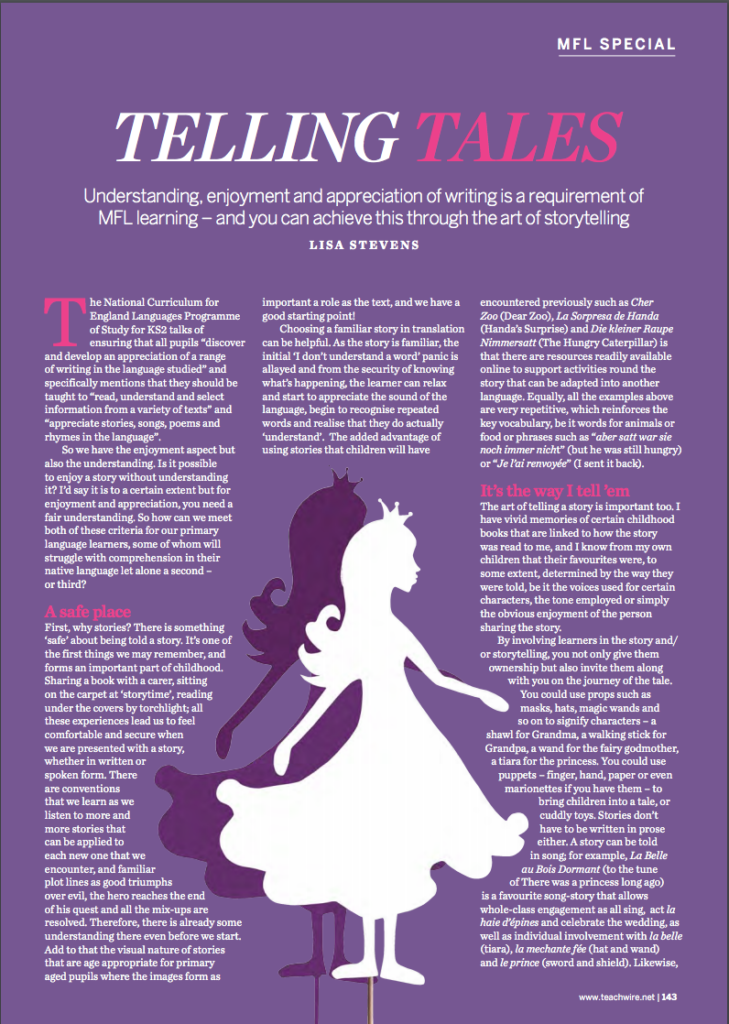
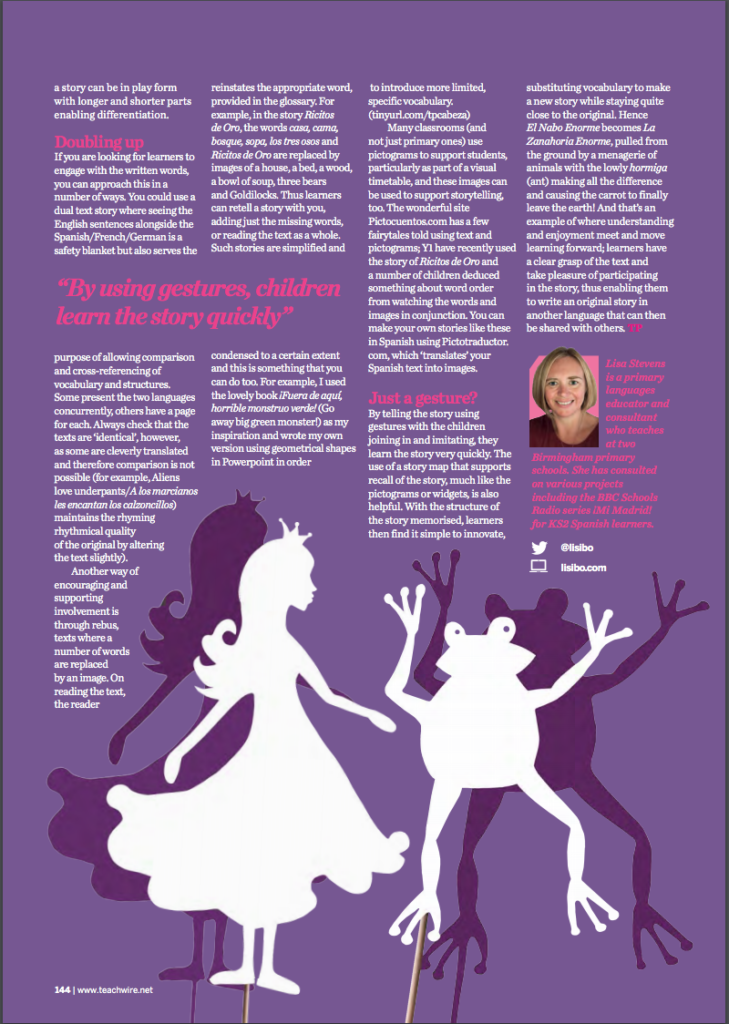
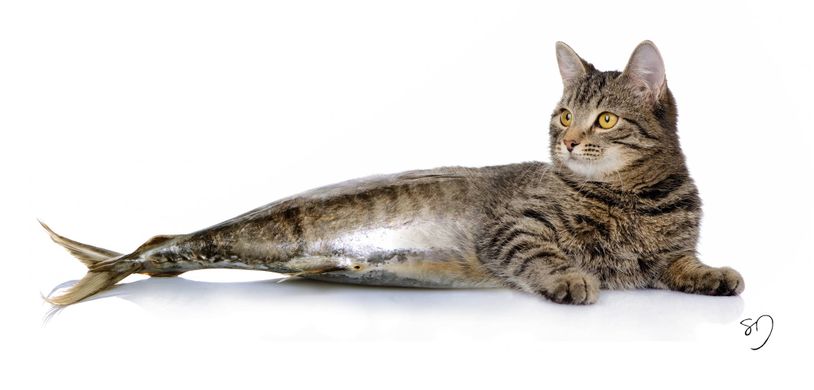





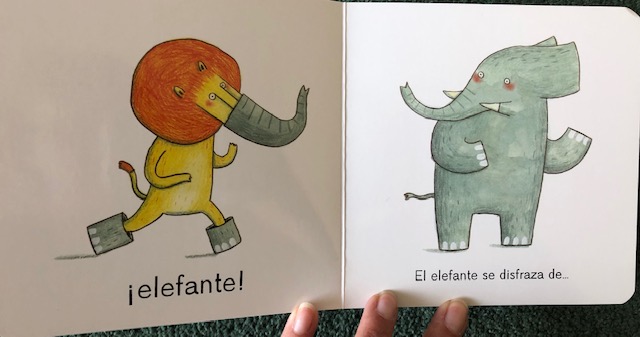
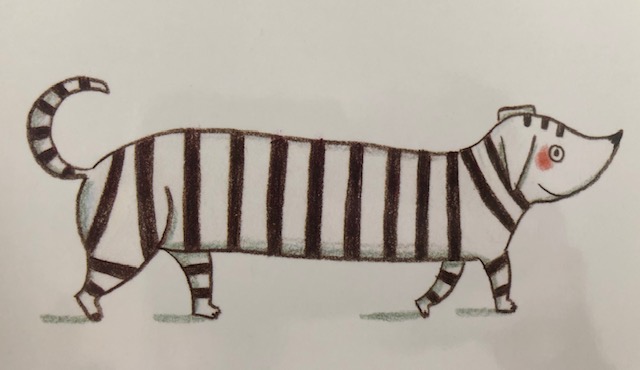
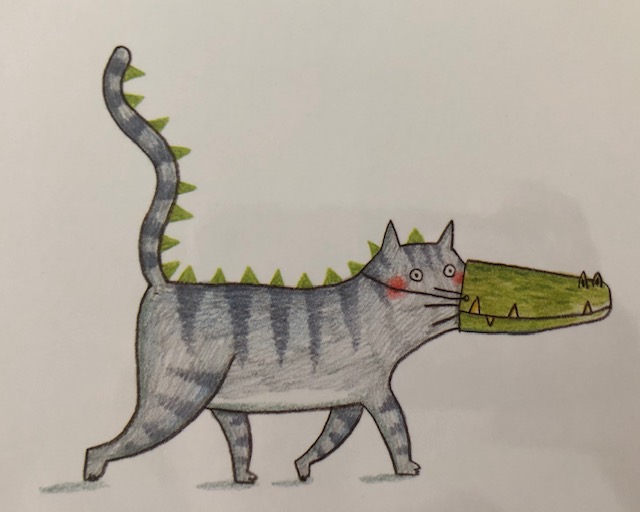
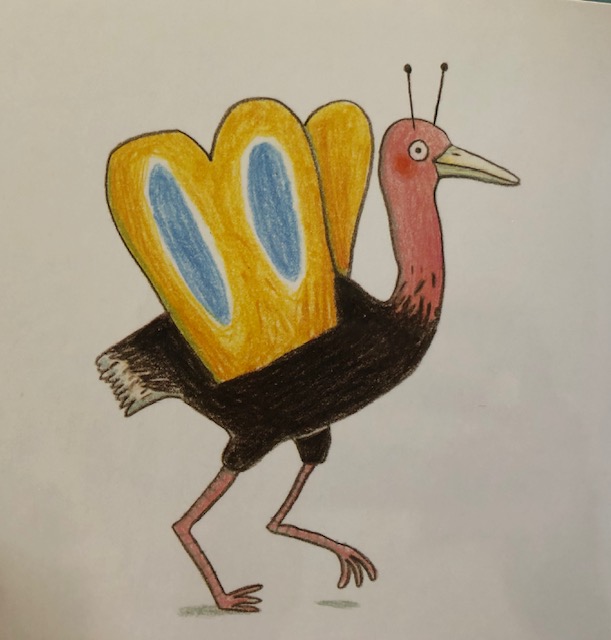



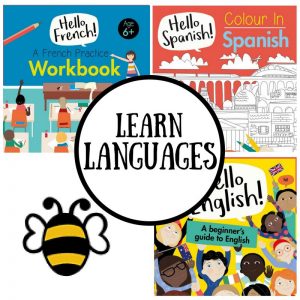

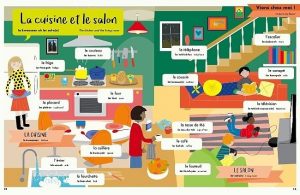
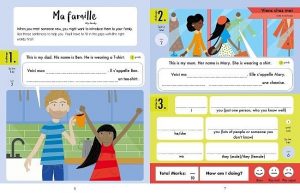
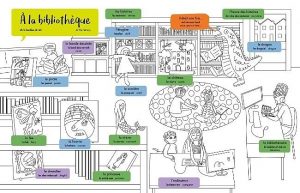
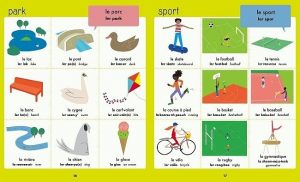

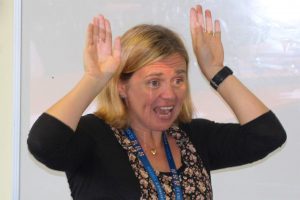
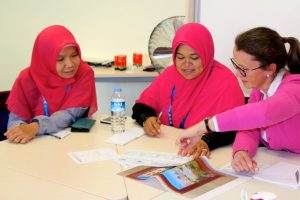
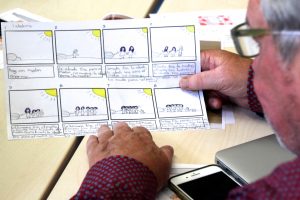
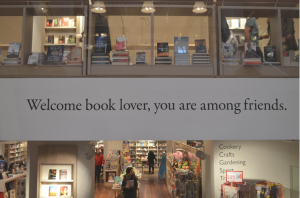
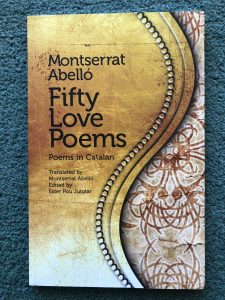
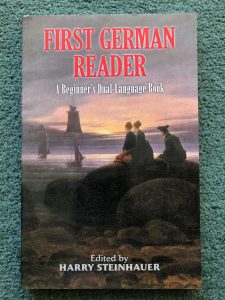
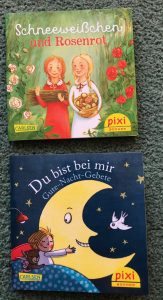
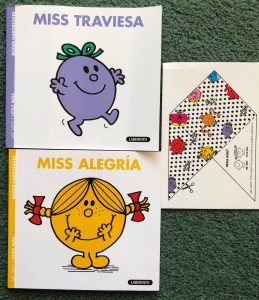
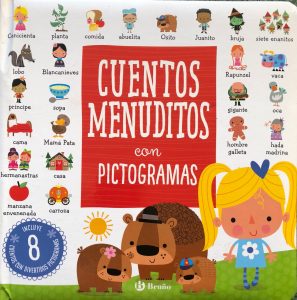
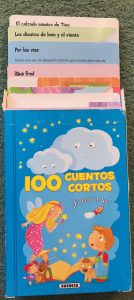
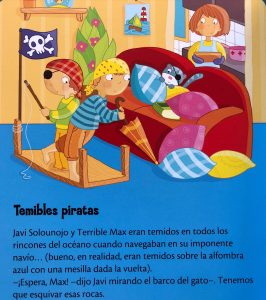
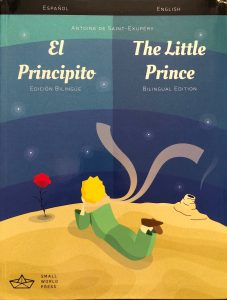
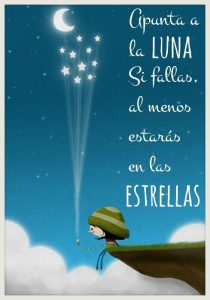
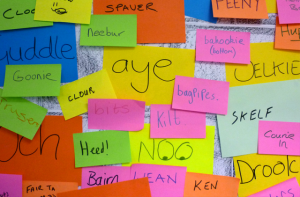
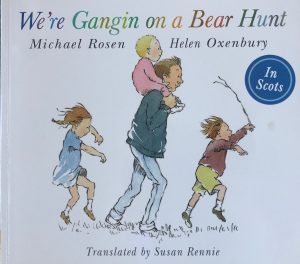
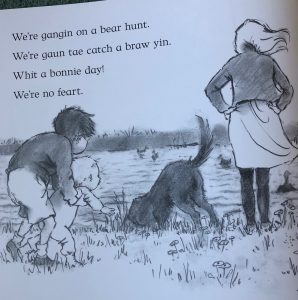 My favourite line is below “A birlin skirlin snawstorm’ – my son can tell you all about a good Scottish snawstorm!
My favourite line is below “A birlin skirlin snawstorm’ – my son can tell you all about a good Scottish snawstorm!


